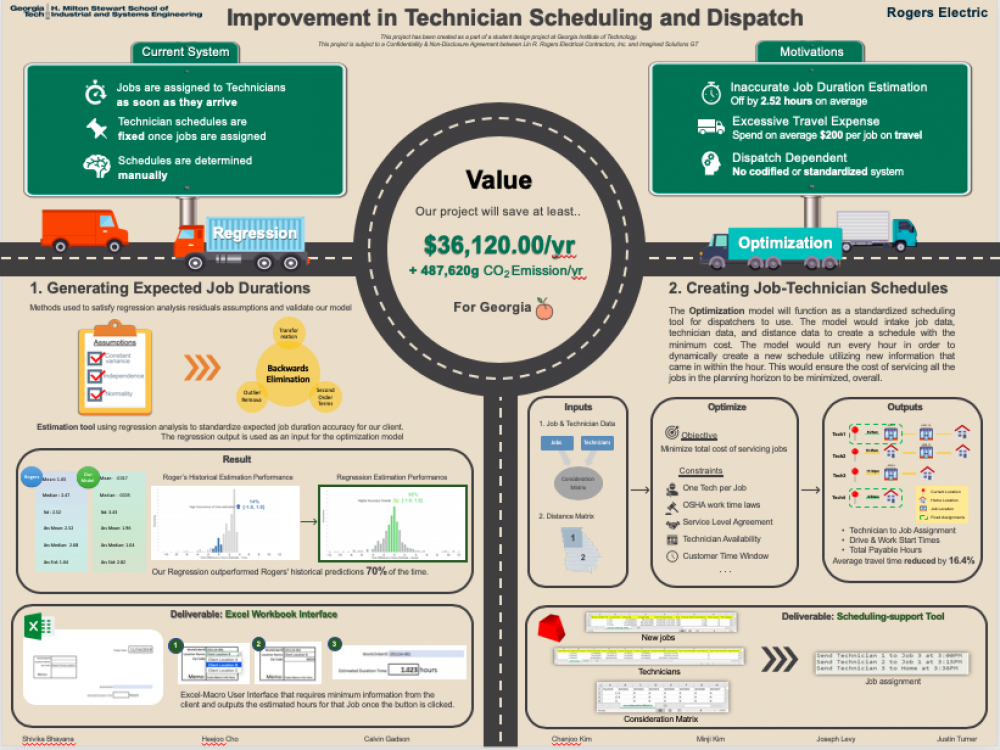Client Context
Rogers Electric is the largest electrical installation and repair services provider in the United States. They service customer job requests through a series of steps that involve dispatch operations who assign and schedule technicians to jobs.
Project Objective
Rogers inaccurately estimated job durations which can lead to scheduling inefficiencies. They often overestimate the amount of time it takes to complete a job request due to assigning 4 hours for every job duration estimate.
Rogers technician assignment and scheduling process is not standardized so each dispatch coordinator has his/her own methodology in how he/she assigns technicians to jobs. As a result of this unique assignment process, often technicians aren’t scheduled to jobs with the travel requirement considered. Rogers pays technicians the same amount to travel and perform work. Rogers is seeing excessive travel time for jobs with an average travel time of 6 hours.
Our team designed and created an optimization model that takes in expected job duration, job site location, technician current and home location, customer and technician availability, customer service level agreement in order to reduce the total amount of time spent traveling to and from a customer job site. The optimization model outputs a feasible schedule of technician-job assignments and their respective costs while adhering to system constraints to minimize the total cost to service a customer job request.
Design Strategy
Using a regression model, our team improved the accuracy of the initial job duration estimates. With this job duration estimation, travel distance data, and job and technician data, our team built an optimization model to generate a cost-effective schedule.
Deliverables
1.) Macro-enabled Excel Workbook : Upon inputting the necessary initial information, the excel will produce the estimated work duration time.
2.) Job csv file
3.) Technician csv file
4.) Consideration matrix
5.) Distances matrix
6.) Gurobi Script
7.) Readme.txt: this will contain the instructions on how to navigate and use the deliverables
Three recommendations are made to Rogers
1.) Open source solver instead of Gurobi to reduce the cost of implementation
2.) Update and collect more data: to increase the accuracy of the regression and optimization model, better data collection and tracking should be practiced.
3.) Integration: Integrate our excel input and output files with their current system (REMA) so it can be run automatically by dispatch.


